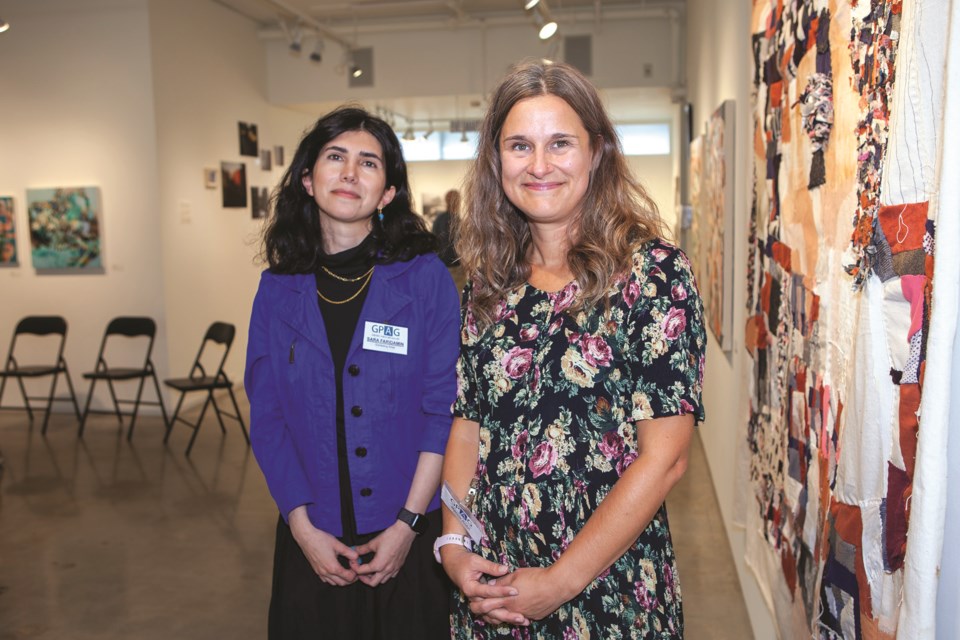The Sunshine Coast debut of two visual artists offers geographic grounding as a cure for postmodern dysphoria.
Complementary exhibitions by Vancouver-area artists Marcie Rohr and Sara Faridamin opened with a public reception at the Gibsons Public Art Gallery on Aug. 31.
In Rohr’s show, In Formation, she uses acrylics, oils, pencil and textiles to create abstract collages that evoke the complex character of mountains. “Mountains can be dangerous,” she observed. “But they can be absolutely places of stillness and peace that we can’t even find anywhere else.”
Through paintings like In the Wandering, Rohr uses the metaphor of rugged, tortuous terrain to typify human transformation under pressure.
“The only reason why [we think] mountains are angular and rough is related to our size and scale in proportion to theirs,” she said. “It’s a factor of our own limits, our own proximity and frailty.” Her fusion of repurposed fabric and cotton paper, especially in She, Too, is a Soft Growing Thing, contrasts the impression of unyielding enormity with a supple substrate.
Rohr, who as a mature student graduated in 2021 from Emily Carr University of Art and Design, has another vocation: nursing. She sees the two disciplines as inexorably connected and recalled a professor observing that her art references the messiness of the human body.
“And I answered: well, I know why that is,” she said. “The tangible connections I have with humans are so powerful.”
Rohr’s abstract collages blend landscape and portraiture, as in Truth Ceremony. The work suggests the stories borne by human body parts, rendered with hues reflecting the interplay between metamorphic geology and a sentient cosmos.
In acrylic paintings like We are Now in the Mountains and They Are in Us and Summit Sunset, she makes her thesis plain: rocky promontories can teach people the power of time.
“If we could see life the way it actually is, we would not be able to survive,” Rohr said, “because we would be so overwhelmed that our senses would shut down. We cannot be naive [about time], but we can also be gentle with ourselves.”
In the Eve Smart Gallery, Sara Faridamin’s series of photographs (A Lived Temporality) captures metropolitan streetscapes through windows of three cities in the United Kingdom and Canada: London, Montreal and Vancouver. Distinctive architecture becomes the backdrop to human drama frozen in time.
In Rainy day is not dreary, pedestrians in plaid skirts lean into conversation, their animated faces partially obscured by umbrellas. Walking and Not Looking uses the geometric consistency of pavement stones to highlight the isolation of people striding atop them.
“I’ve been trying to find beauty in the mundane and ordinary,” said Faridamin, who is originally from Iran and holds three master’s degrees in artistic disciplines, most recently from Concordia University. “It’s very satisfying because I think a lot of times we don’t see those moments. We don’t need the most amazing sunrise or sunset to be happy. It’s just those little moments of shadow coming because of light at a certain angle.”
Faridamin’s images coalesce into a sociological study of each metropolis. In London, she captures people connecting in urban spaces. In Montreal, she explores the impact of material culture. In her Vancouver prints, the palette explodes from monochrome into golden clouds and cherry blossoms: colour is intrinsic to the city’s nature.
In Formation and A Lived Temporality remain on display at the Gibsons Public Art Gallery until Oct. 1. Browse to gpag.ca for details.




